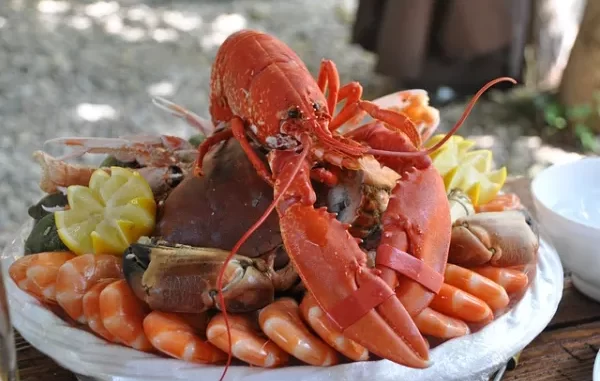
Lobsters are fascinating creatures that have some surprising facts and myths associated with them. From their strange eating habits to their anatomy and evolution, lobsters have a lot of interesting information to share. This article will explore some of the most interesting fun facts about lobsters. You might be surprised to learn some of the things lobsters can do and what makes them so special. So if you’re ready, let’s dive into the fascinating world of these crustacean lobsters and discover some fun facts about lobsters.
“Crustacean Curiosities: 10 Fun Facts About Lobsters”
- Lobsters are a type of marine crustacean that are found in oceans around the world.
- Lobsters have an exoskeleton, which means they must periodically shed their outer shell in order to grow.
- They have five pairs of legs, with the front two pairs having claws that can be used for catching prey and defending themselves.
- Lobsters can live for up to 50 years and have an average life span of about 25-30 years.
- Lobsters have an impressive vision and can detect both color and polarization.
- Lobsters can regenerate lost limbs and can even regrow a new claw if one is lost or damaged.
- Lobsters can communicate with one another through a variety of sounds, including a loud “clicking” noise.
- Lobsters are omnivorous and will eat a variety of foods, including small fish, mollusks, worms, and other crustaceans.
- Lobsters have been a staple in many cultures for centuries, with some of the earliest references to the crustacean found in ancient Greek and Roman texts.
- Lobsters can be cooked in a variety of ways, such as boiling, steaming, baking, or grilling.
“Amazing Lobster Lore: Learn Something New About These Ancient Animals”
Lobsters are one of the oldest species on the planet, having been around for over 100 million years. They are a keystone species in many marine ecosystems, providing food and shelter for a variety of other organisms. Lobsters can be found in almost every ocean on Earth, from shallow waters to deep sea bottoms.
Lobsters come in a variety of colors, ranging from bright blue to deep red. The color of a lobster is determined by the carotenoid pigments that are found in the food they eat. The bright red color of cooked lobsters is due to the presence of astaxanthin, which is a pigment found in plankton and other marine organisms.
Lobsters are able to regenerate lost limbs, a process that can take up to five years. In addition, they have been known to live for more than 100 years in the wild.
Lobsters can also move surprisingly fast. They can reach speeds of up to 10 feet per second! This is made possible by their tail fan, which propels them through the water.
Lobsters are omnivores, meaning they eat both plants and animals. Their diet consists of small fish, crustaceans, mollusks, and plankton.
Lobsters are highly sensitive to environmental changes. If a lobster is exposed to too much stress, it will shed its exoskeleton or molt. This process allows the lobster to grow and replace lost limbs.
Lobsters have an important place in human culture. They have been featured in books, films, and artwork throughout the centuries. In addition, the lobster roll is a popular seafood dish in many parts of the world.
Lobsters are fascinating creatures with a long and rich history. They are a keystone species in many marine ecosystems and are an important part of human culture. Whether you are a seafood lover or just curious about these ancient animals, there is a lot to learn about lobsters!
“Lobster Legends: Fascinating Facts You Need to Know”
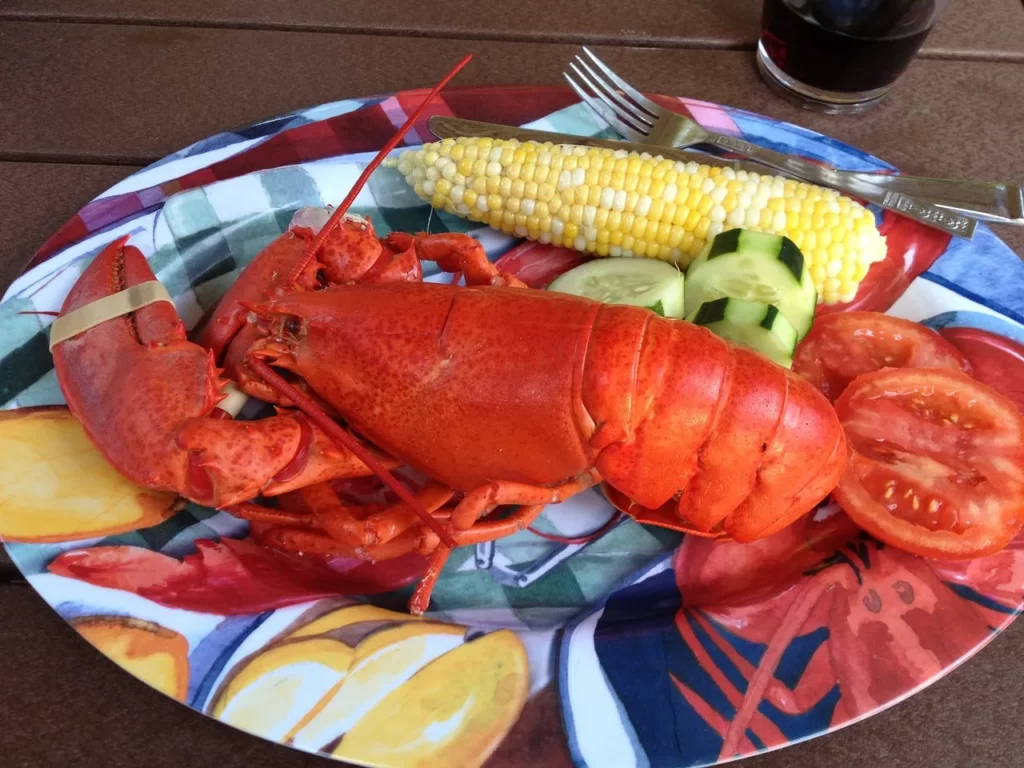
Lobsters are one of the most popular seafood dishes enjoyed around the world. But did you know that these crustaceans have a fascinating history and some unique characteristics? Here are some fascinating facts about lobsters that you need to know.
First, lobsters are believed to have lived on the Earth for more than 140 million years. This makes them one of the oldest creatures in the ocean. They have also been around long enough to have survived five mass extinctions.
Second, lobsters can live up to 50 years and can grow up to three feet in length. They can also weigh up to 40 pounds. Although they are often found in shallow waters, they can also travel to depths of more than 2,000 feet.
Third, lobsters have blue blood. This is due to the copper-based hemocyanin they produce instead of iron-based hemoglobin like humans. Hemocyanin helps lobsters transport oxygen to their cells, allowing them to survive in cold waters.
Fourth, lobsters can regenerate their claws and legs. This means that if a lobster loses a claw or a leg, it can regrow it in a few months.
Finally, some lobsters can also change color. They can turn a deep red or blue depending on the temperature of their environment.
These are just some of the fascinating facts about lobsters that you need to know. Whether you are a seafood lover or just curious about the creatures of the sea, these facts will help you gain a better understanding of these ancient creatures.
“A Closer Look at Lobsters: Discover the Wonders of These Incredible Animals”
, educational
Lobsters are fascinating creatures that have lived in the world’s oceans for millions of years. Their anatomy and behavior have captivated scientists and curious minds alike, and their resilience to changing climates and environments has enabled them to thrive in a variety of habitats. In this article, we’ll take a closer look at these incredible animals, exploring their anatomy, behavior, and more.
Lobsters come in a variety of shapes and sizes, but they all share several common characteristics. They have a hard shell, two large claws, and eight jointed legs. Their carapace, or back shell, is covered in small hairs that help detect movement in the water. The lobster’s exoskeleton is made up of a tough outer layer of chitin, a complex sugar molecule that helps protect the animal from predators and other dangers.
Behaviorally, lobsters are quite active animals. They spend most of their time searching for food, scurrying around on the seafloor in search of prey. They are also very territorial, defending their homes from intruders. When threatened, lobsters will often use their large claws to fight off predators.
Lobsters have several unique adaptations that help them survive in their environment. For example, some species have a gland in their body that produces a mucus-like substance that helps them move more quickly and efficiently in the water. Furthermore, they can regenerate lost limbs and body parts, which allows them to survive even after serious injury.
Finally, lobsters are renowned for their unique reproductive strategies. Female lobsters carry their eggs in a sac on their underside until they hatch, which can take several months. During this time, the female will carry the eggs around and protect them from predators. Once the eggs hatch, the lobster larvae will be released, where they will continue to grow and mature.
Lobsters are truly remarkable animals, and they offer us a unique glimpse into the fascinating world of marine life. From their anatomy to their behavior, these incredible creatures are sure to fascinate for years to come.
“The Incredible Lobster: Unveiling the Mysteries of the Sea”
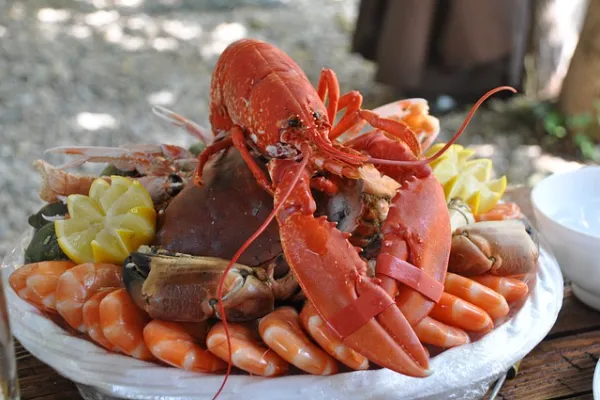
The Incredible Lobster is an amazing creature of the sea, shrouded in mystery and wonder. For centuries, this unique crustacean has been a source of fascination and curiosity among people of all ages. It is time to uncover the secrets of the lobster and learn more about this amazing creature.
The lobster is a hard-bodied invertebrate that can be found in many oceans and seas around the world. It is generally identified by its five pairs of legs, its claws, and its long antennae. The lobster is an omnivore, meaning it can feed on both plant and animal matter. Its diet consists of mollusks, crustaceans, and other small sea creatures.
The lobsters’ claws are a key adaptation that allows them to survive in their aquatic environment. These claws can be used for defense, foraging, and even mating. Lobsters have been known to use their claws to fight off predators, to break open shells for food, and to clasp onto each other during mating.
Lobsters are also quite resilient and can survive in a wide range of temperatures and depths. They can be found in depths of up to 3,000 feet and can tolerate temperatures between 32 and 70 degrees Fahrenheit.
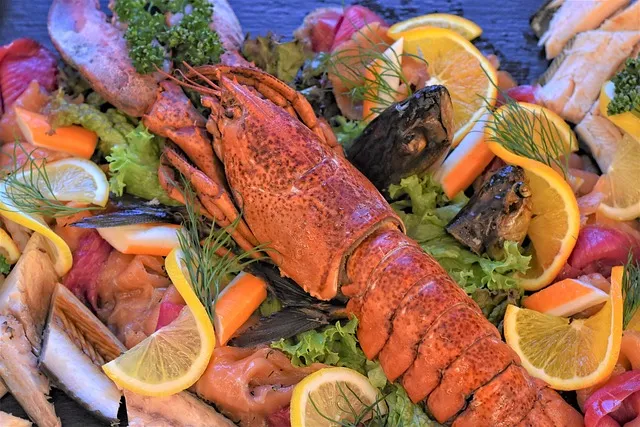
The lobster is also a long-lived creature, with some individuals living for up to 100 years. They have a slow growth rate and a complex life cycle. The female lobster will lay up to one million eggs in her lifetime, which are then fertilized and released into the ocean. The larvae will drift in the ocean currents for up to two years before settling on the seabed as young adults.
The Incredible Lobster is a mysterious creature with many secrets that are yet to be discovered. With further study, we may one day unravel the mysteries of this incredible creature of the sea.
“Kitchen Knowledge: Unexpected Facts About Lobsters”
Lobsters are a popular seafood delicacy enjoyed around the world. While they may seem like a familiar food, there are many interesting facts about lobsters that may surprise you.
For starters, lobsters are not fish. They are actually invertebrates, meaning they have no spine. They are closely related to crabs and shrimp, and belong to the Decapoda order.
Lobsters can live quite a long time. In captivity, they can live up to 50 years, while wild lobsters can live up to 100 years! They continue to grow and molt throughout their life, and their size can reach up to 40 inches long.
Lobsters have some unusual characteristics. They have a pair of claws that they use to hunt and crush prey, as well as antennae that they use to detect food. They also have a unique blue blood that contains hemocyanin, a copper-based respiratory pigment instead of the red iron-based hemoglobin found in humans.
Lobsters are also surprisingly fast. They can scuttle along at speeds of up to 25 miles per hour!
Lobsters are a fascinating creature that many people enjoy eating. From their strange anatomy to their impressive speed, there are many unexpected facts about lobsters that may surprise you.
“Under the Sea: Fascinating Facts About Lobsters”
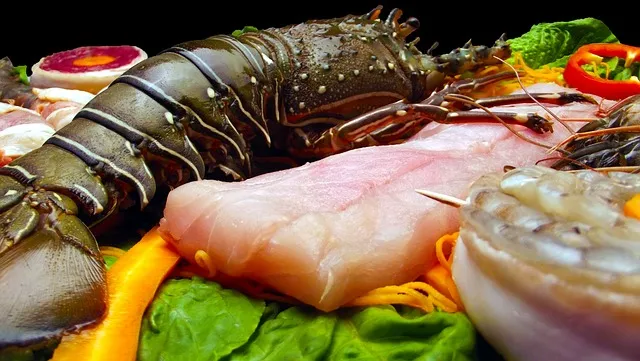
Lobsters are some of the most fascinating and well-known creatures of the sea. They are also one of the longest living species, with some living up to 50 years or more. Here are some interesting facts about lobsters that you may not have known.
The lobster is a scavenger, meaning it feeds mostly on dead animals and plants. They are also omnivorous, eating a variety of both plant and animal matter. Their diet includes clams, mussels, snails, small fish, and worms.
The lobster’s hard outer shell is called a carapace. The carapace protects the lobster from predators and helps keep it safe from harm. As the lobster grows, its shell will need to be shed and replaced with a new one. This process is called molting.
Lobsters can also climb and jump. They have two large claws, one for crushing and one for tearing. They use their claws to snatch up food, defend themselves, and even climb rocks.
Lobsters are very social creatures and can live in groups of up to 50 individuals. They communicate with each other using chemical signals, such as pheromones.
Lobsters have a unique reproductive cycle. The female lobster will release eggs into the ocean that will hatch into tiny larvae. The larvae will then drift in the ocean for up to nine months before settling in a new area.
These creatures play an important role in the marine ecosystem. They are an important food source for other sea creatures, while their discarded shells provide shelter and food for many other species.
Lobsters are truly amazing creatures, and it is no wonder they have been a popular seafood choice for centuries. Hopefully, these fascinating facts about lobsters have helped you better understand these incredible creatures.
“Lobster Tales: Unbelievable Facts You Didn’t Know”
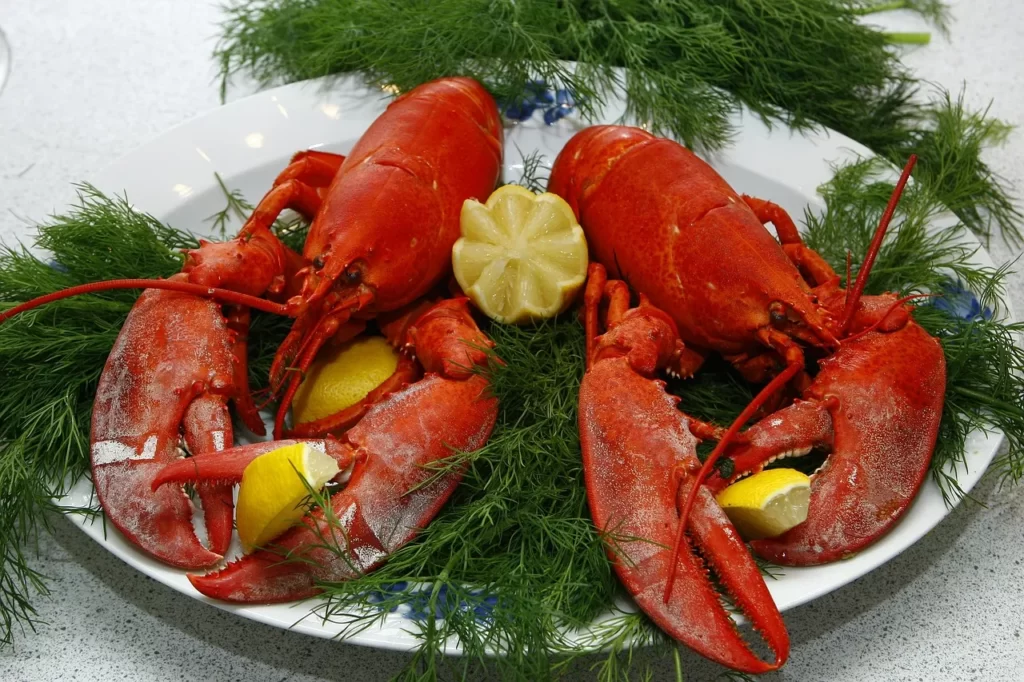
Lobsters, one of the most beloved seafood delicacies, have a fascinating and mysterious history. While many people may have heard some of the more popular facts about lobsters, there are some surprising and intriguing facts that you may not have known about these creatures.
Did you know that lobsters can live up to 50 years old? This is due to their incredibly slow rate of aging. In addition, lobsters have the ability to regrow lost limbs, allowing them to remain active and healthy for decades. They also have an impressive immune system that helps them fend off a variety of illnesses.
Lobsters are also incredibly strong swimmers that can reach speeds of up to 25 miles per hour. This makes them one of the fastest swimmers in the ocean. Furthermore, they can travel long distances in search of food and mates, often covering hundreds of miles in a single journey.
The most remarkable thing about lobsters is that they can change color. When they feel threatened, they will turn from a dark green or brown to a bright red, yellow, and orange. This is a defense mechanism that helps them blend in with their environment and hide from predators.
It is clear that lobsters are incredibly fascinating creatures. From their incredible longevity to their remarkable ability to change color, there are many unbelievable facts about these sea creatures that you may not have known. Whether you’re a seafood lover or simply curious about the world’s most beloved seafood delicacy, it is worth learning more about the lobster’s extraordinary characteristics.
In conclusion, lobsters are fascinating creatures that have a lot of interesting facts associated with them. From their unusual reproductive behavior to their ability to regenerate lost limbs, lobsters have a lot of interesting characteristics that make them unique. They are also found in a variety of habitats and can live in both fresh and salt water. Lobsters are a popular seafood choice, and their flavor and texture make them an enjoyable meal.






Leave a Reply